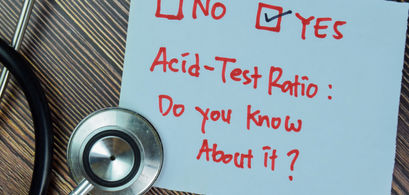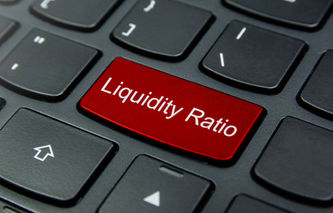Definition
Also known as the quick ratio, the acid test is a liquidity ratio, which measures a company's ability to convert assets into cash to pay its debt obligations over the next 12 months. The quick assets used by this measure are those that can be quickly converted into cash, thereby making it a more rigorous test of liquidity than the current ratio.
Calculation
Acid Test = Quick Assets / Current Liabilities
Where:
Quick Assets = Cash + Marketable Securities + Accounts Receivable
Current Liabilities = Accounts Payable + Income Taxes Payable + Current Portion of Long Term Debt
Explanation
Since inventory and prepaid expenses are removed from current assets, this ratio does not have to be as high as the current ratio. Generally, a value of 1.0 or higher is considered acceptable, while a value less than 1.0 is problematic. A ratio that is too high may indicate the inefficient use of current assets.
When drawing conclusions about the relative performance of a company, benchmark comparisons should be made with competitors in the same industry.
Example
Last year, Company A's balance sheet indicated cash and cash equivalents of $2,219,000, short-term investments of $1,416,000, and net receivables of $3,867,000. Accounts payable stood at $2,674,000, the current portion of long term debt was $682,000, and other current liabilities were $2,085,000.
Using the above formula, the acid test measure is:
= ($2,219,000 + $1,416,000 + $3,867,000) / ($2,674,000 + $682,000 + $2,085,000) = $7,502,000 / $5,441,000, or 1.38
Based on this information, we know Company A's quick ratio is above 1.0, which is considered acceptable.


